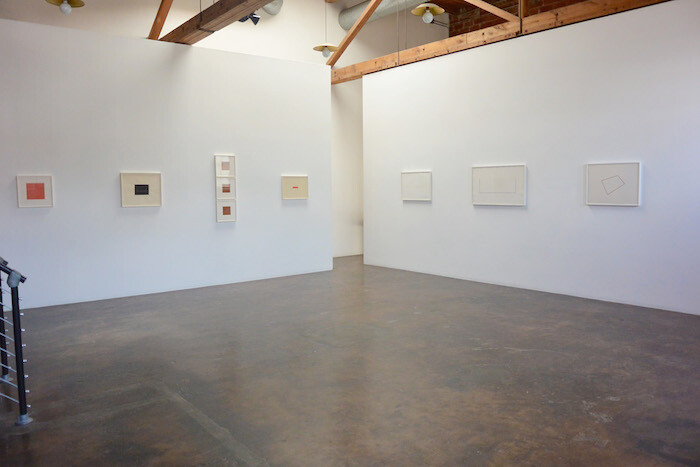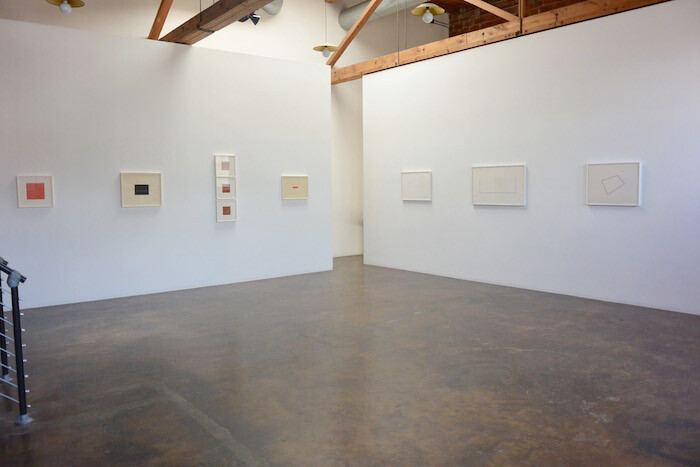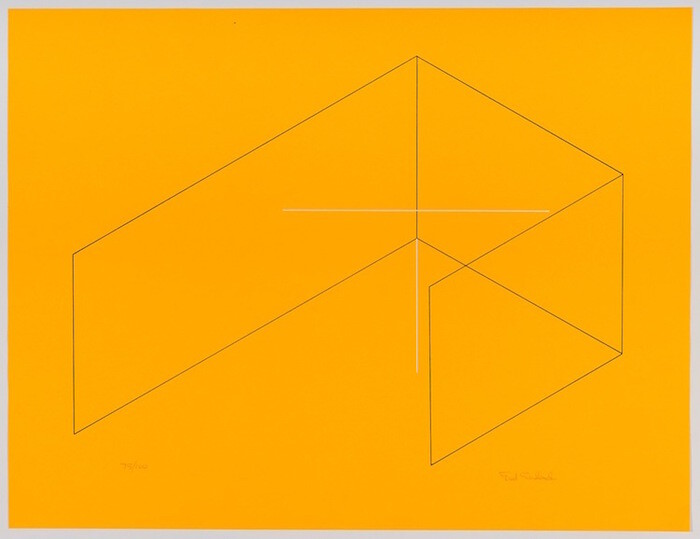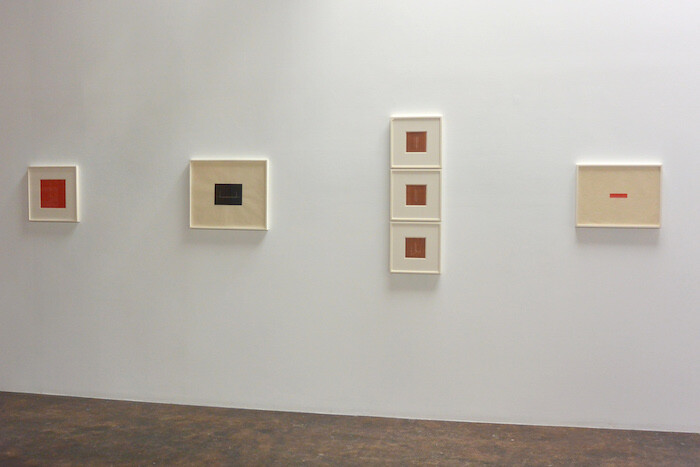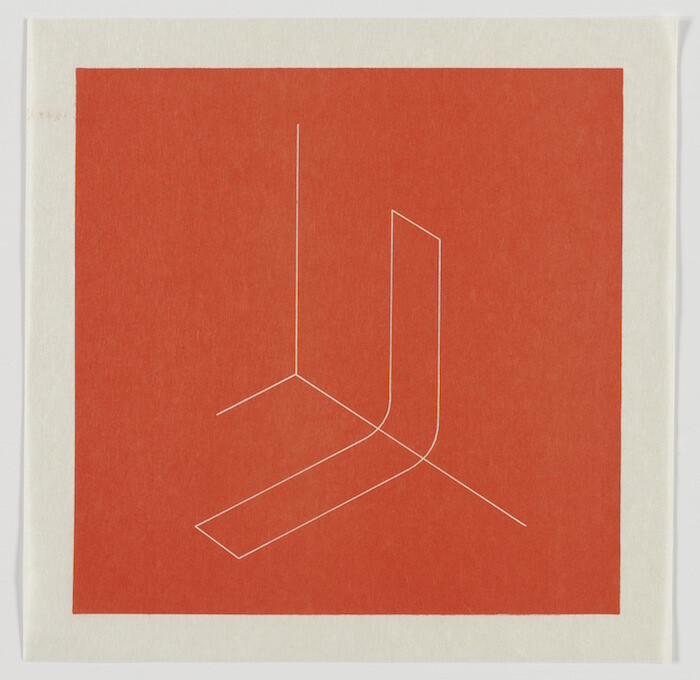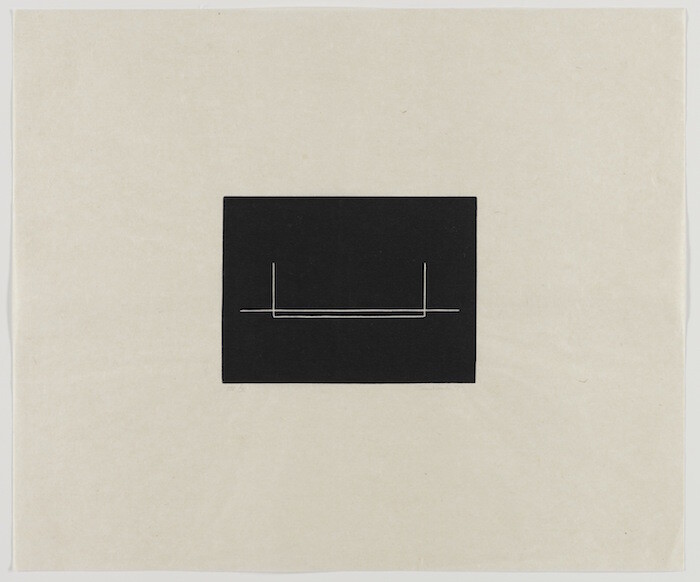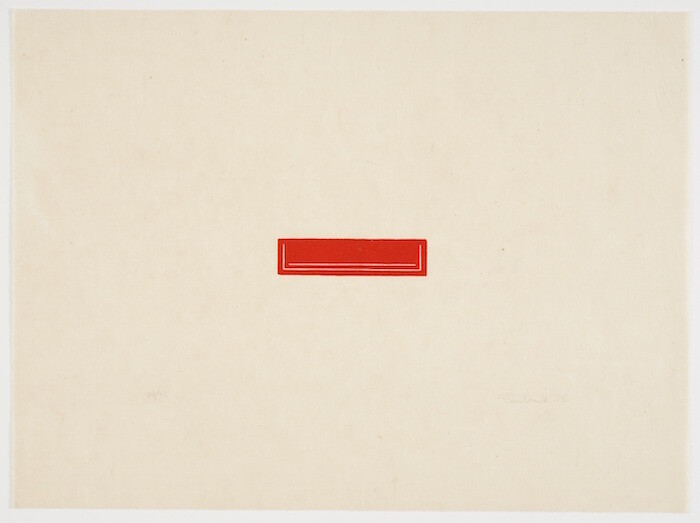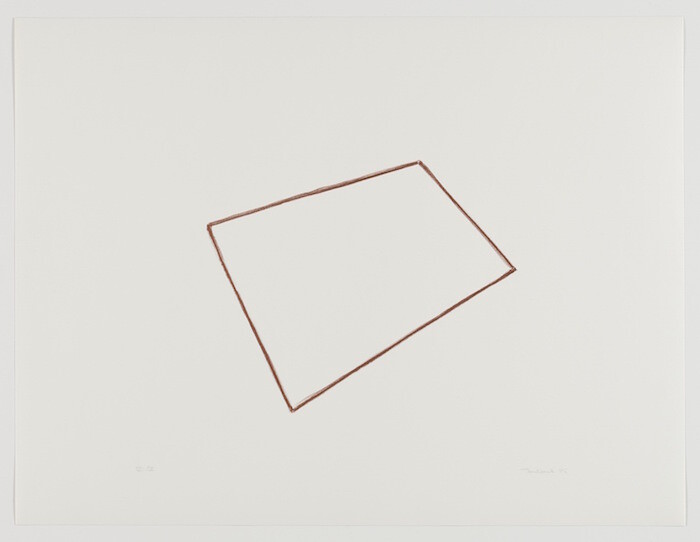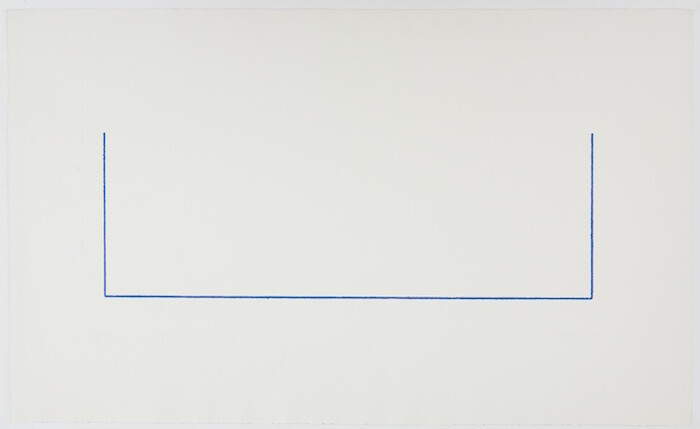A black metal door of an industrial-like brick building welcomes visitors to Lawrence Markey, a gallery that opened in the early 1990s in New York and moved to San Antonio in 2005. In a city with plenty of artist-run spaces and non-profits but only a handful of commercial galleries, Lawrence Markey certainly enriches San Antonio’s art scene. With a program featuring mostly drawings, paintings, and prints of mid-career artists and historical figures from the 1960s and ’70s, the gallery brings significant Minimalist and abstract works by artists such as Sol LeWitt, Jo Baer, and Suzan Frecon to the city’s public.
Currently on show is Fred Sandback (1943–2003), an American artist who has been integral to the gallery’s program with more than ten exhibitions, including its inaugural one in 1990. Sandback is best known for his ephemeral sculptures made with humble materials, such as elastic cords and yarn, always stretched horizontally or vertically, allowing different configurations. In these works, stripes outline empty space, creating a specific spatial arrangement that complicates any simple perception of a given area. His three-dimensional drawings explore line and color as the illusionistic producers of new and unimagined spaces that change depending on the position of the viewer.
The 11 prints featured in this exhibition—etchings, lithographs, silkscreens, and woodcuts, all untitled and produced in the 1970s—are points of reference for his sculptures, although these are absent. For instance, a red, square-framed lithograph from 1979 shows a sculpture in which a rectangular length of yarn is suspended diagonally between the floor and the wall. Another print, a bright yellow silkscreen from 1970, installed on a table, appears as a translation into paper of Pink Corner Piece (1970), another construction in which two equally sized, stretched elastic cords—one positioned from wall to wall to straddle the corner, and another that delineates the intersection of two walls on the ground—serve as a study for the convergence of sculpture and architecture.
Sandback conceived lines as “a whole, an identity for a particular place and time.”1 For him, line was not a simple explorer of space but an essential creative producer of it. Hence the artist’s band-based constructions were not placed within a space in order to posses it, to take it over, but to coexist and generate dialogue. Sandbank equally demonstrates the multiplicity of space in a black-framed rectangular linocut from 1975, in which a white, U-shaped line is intersected in its lower part by another white line. It is not clear if it is a figure, the ground, a wall, or simply empty space. There is a compelling fluctuation between fact and illusion in this print and those in the show that are similar to it, an engagement with the multidimensional condition of space that highlights shifts in perception as a viewer moves through the gallery.
Like other Minimalist artists, Sandback’s concentrated work is an art meant to be seen and experienced rather than intellectualized. His works are not ideas translated into material, but are means and subject, actualities that imply phenomenological relations with spatiality. At Lawrence Markey, we see how the artist used prints as a point of reference, but also as autonomous works with the compelling power of his sculptures to create the illusion of spatial depth. As the prints on view here are all editions, they also follow the non-hierarchic logic mirrored in Minimalist artists’ interest in symmetry, seriality, and repetition, creating a kind of beauty that’s accessible to diverse publics.
Fred Sandback, 1975 Notes, Fred Sandback Archive. Accessed October 8, 2015, http://fredsandbackarchive.org/atxt_1975.html
